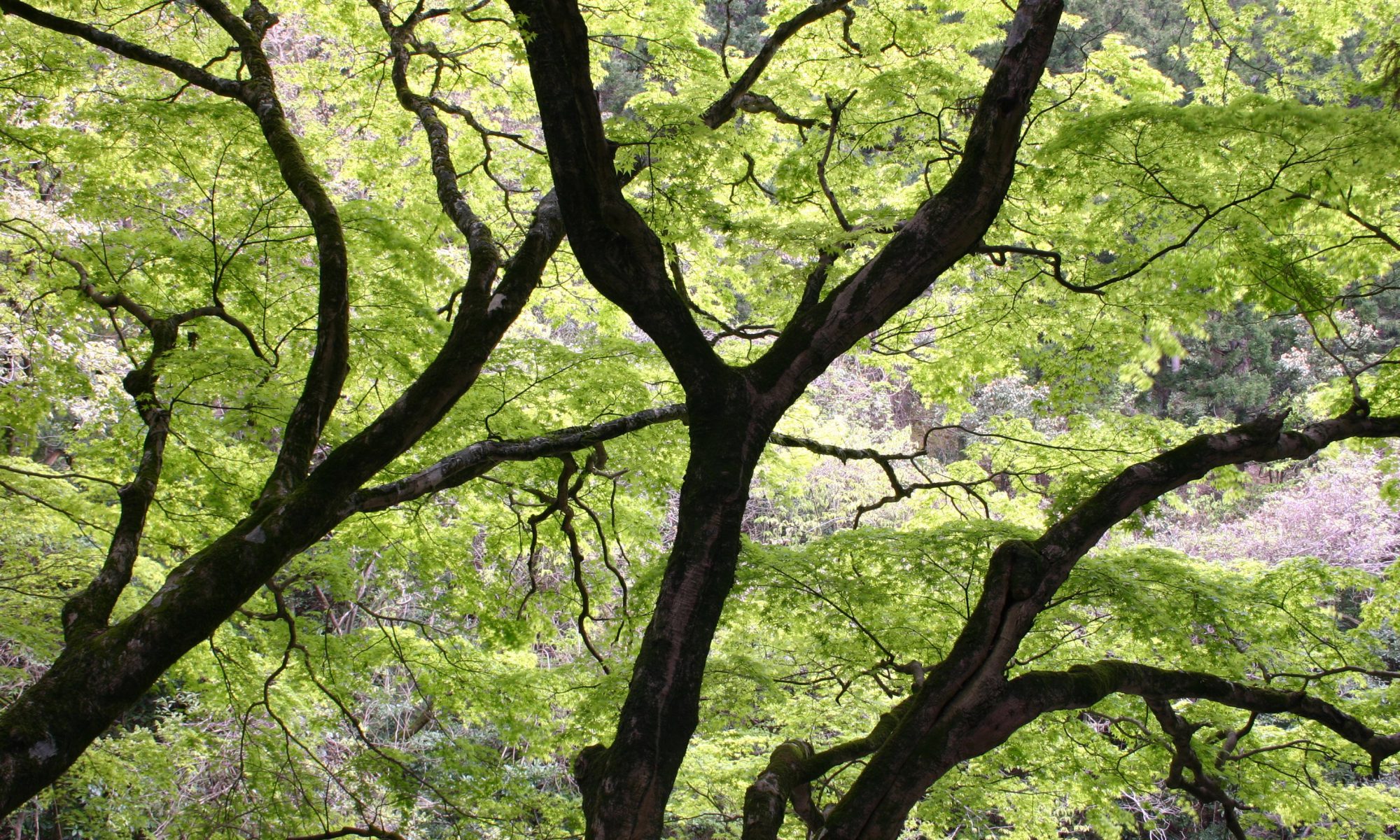Kyushu’s naturally wet climate and relative warmth provides near perfect growing conditions for epiphytic plants and few places rival one of its greatest natural wonders, Kikuchi Gorge in northern Kumamoto Prefecture. This gorge drains an upland plateau averaging between 600-800 meters elevation. The water of the gorge’s river, as well as many of the region’s waters, are some of the purest in Japan since their source is subterranean, and therefore is filtered through kilometers of porous rock. The entire area is in fact the base of an ancient volcano that blew its top thousands of years ago, leaving behind one of the world’s largest extant calderas, Aso Caldera, measuring 25 km in diameter north to south, and 18 km east to west. Though the mountain lost most of its mass in the distant past, it remains active.
Along the watercourse of the gorge are numerous waterfalls and old growth forest. This forest is most famous for its fall foliage, in particular its maples and zelkovas, but also is home to a host of many types of fern and their allies, the clubmosses and spikemosses. Without a doubt, historically the gorge boasted many epiphytic orchids as well, but these are few and far between nowadays, most likely having been collected out years ago. In the 60’s, 70″s, and 80’s, as Japan’s economy flourished, the desire for rare species reached a fevered pitch and many wild areas were denuded of their most precious citizens – orchids lead the way, but many others were effected. Luckily, most ferns were left alone, or were able to reproduce fast enough to maintain viable populations. Kikuchi Gorge remains a lovely example of epiphytic laden, riparian old growth forest.

Epiphytes seem to grow most luxuriantly on horizontal branches where leaves, animal droppings, and other organic material can build up. Two commonly seen ferns in the gorge are Loxogramme salicifolia and Lemmaphyllum microphyllum, as seen in the picture below. The long simple fronds belong to L. salicifolia while the small oval fronds are of L. microphyllum. The latter is a very common species throughout the low mountains of Kyushu, while the Loxogramme is more rare. In the Fukuoka City area I’ve seen L. salicifolia growing strictly on rocks, but in Kikuchi the humidity is so high that it ventures out onto the trees as well. Like many other epiphytic ferns, this species shrivels when dry, only to rebound once the rains come again.

Continue reading “The epiphytic ferns of Kikuchi Gorge, Kumamoto Prefecture, Japan”





















